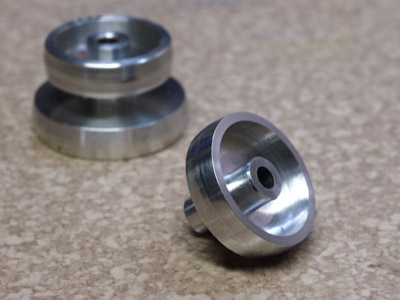
There is a discussion on the Restoring and Improving a Thorens TD-124 MK II thread about how a motor drive pulley a bit smaller would run slower putting less load on the magnetic speed control break and thus run quieter. I thought I'd try to make one.
First off, I do not own a metal lathe. Band saw and drill press aside, I only have one metal working machine. It is an Atlas MFB horizontal milling machine. Thousands were made from 1941 to the 50's in Kalamazoo, Michigan. Many were branded Craftsman and sold by Sears Roebuck. They are small with about 12" X, 3.5" Y and 5.5" Z table movement. They were (are) dismissed by many "real" machinists as a hobby machine. Especially ridiculed were several gears made of Zamak zinc alloy. (Like the non-magnetic TD 124 sub-platters we love to hate.) However, the headstock has all the features of a good lathe. The spindle is hollow allowing shafts of up to 1/2 inch to pass through. It accepts #2 morse taper accessories and I have the 1/8,3/16,1/4,3/8,7/16 and 1/2" collets. This helps do precision work in those sizes. It also accepts a standard 3" three jaw chuck. I've made a faceplate to mount odd shaped work. Since It's not a lathe the bed doesn't get in the way so it can swing 14" work. Only really big lathes can do that. Unlike hobby lathes It has back gears that provides the extra torque and low speeds that makes turning large imbalanced work possible. The biggest limitation of course is the lack of a lathe bed and tailstock so it can't turn work between centers.
The first step was to bandsaw a chunk out of some 1" plate aluminum. put it a drill press vice, drill a #14 (.182") hole through it, put a 3/16" reamer in the press and run it slowly through the hole. This left a nice straight and smooth bore. Next I cut a 3" length of stainless rod, (not precision ground but good enough) I tightened the rod into the machine through the 3/16" collet, then threaded the end.
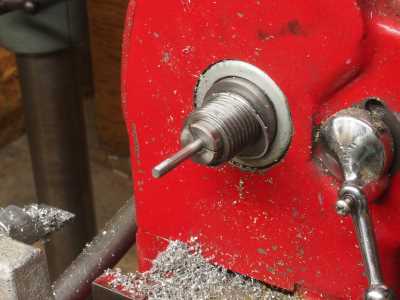
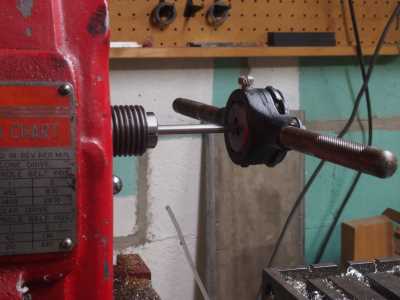
I slid the block onto the mandrel, secured it with a nut and started to make it round.
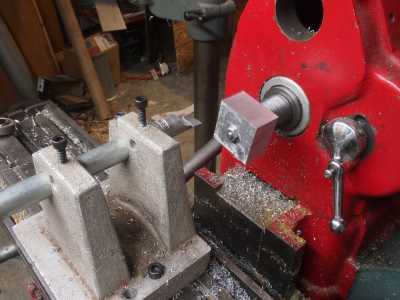
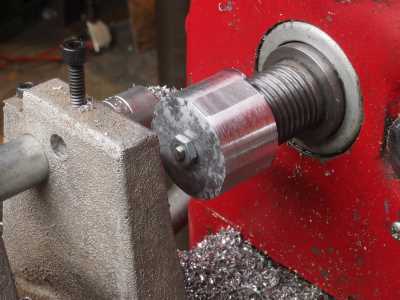
Once it was near pulley size I turned the non pulley part to 1/2" This would provide enough beef for the set screws and allow me to turn it around and hold it with the 1/2" collet.
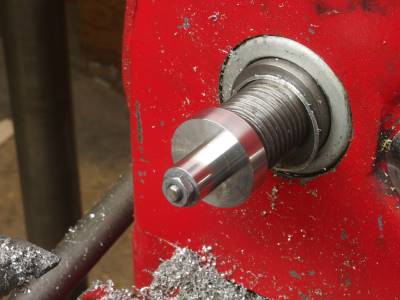
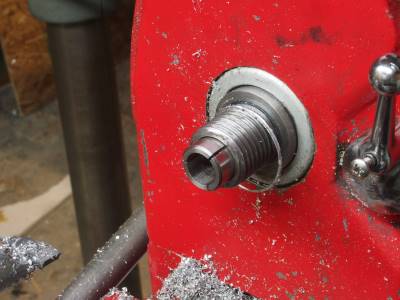
Now with the pulley held without the mandrel and nut, I could finish the end and hollow out the pulley body. In this I copied the Thorens design. I suspect that this was done to reduce the mass. At motor speed a small imbalance could cause vibration. Less mass equals less vibration.
All that was left was to finish the pulley face. It is not flat, If it were the belt would ride off the pulley. Instead the pulley has a narrow flat band in the center and either side angles off. My setup doesn't do angles so I finished the pulley the way mechanics did for centuries, by hand and eye. With this method a fine finish was easy to attain. Here's a quick video:
https://www.youtube.com/watch?v=VNDXFHjWAhQ&feature=youtu.be
At this point I really didn't like that the set screw collar was so long but I couldn't think of how to mount the pulley on the machine without the nut being in the way. I removed the pulley, put it sideways in the drill press vice and drilled the hole for the set screws. The pulley has the unusual feature of opposing set screws so the hole was drilled all the way through. This was the toughest task. I eyeballed the setup, held my breath and drilled. I got lucky and the hole seems perfectly centered. I tapped the holes, put in the set screws and installed the pulley on the turntable.
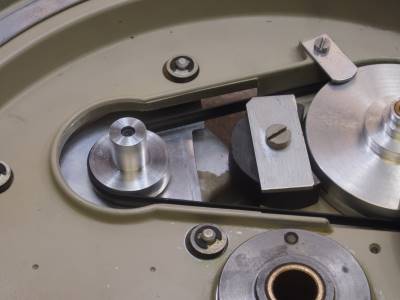
Not good. While the pulley end seemed to run smooth the far end was obviously wobbling. I realized that the hole I originally drilled and reamed was not perfectly perpendicular to the aluminum block. When I tightened the mandrel nut the block pressed up to the flat end of the collet and tilted the mandrel slightly. I thought I was out of luck because I had no way to hold the pulley on the mandrel without the nut. Late that night I thought, "Duh. It's got set screws. In the morning I returned the pulley to the mandrel without the nut and took a small cut on all the surfaces. Luckily I'd purposely left the pulley a little large for the first test. It trued up perfectly and as a bonus I was able to turn the set screw collar side to a much more attractive profile. Now it works with no vibration detectable by ear, eye or touch.
Last edited:

. Now it works with no vibration detectable by ear, eye or touch.
Good to see that it works with speed spectrum and vibration measurement , I can see if your work has been sucsesfull !
Volken
- Status
- This old topic is closed. If you want to reopen this topic, contact a moderator using the "Report Post" button.